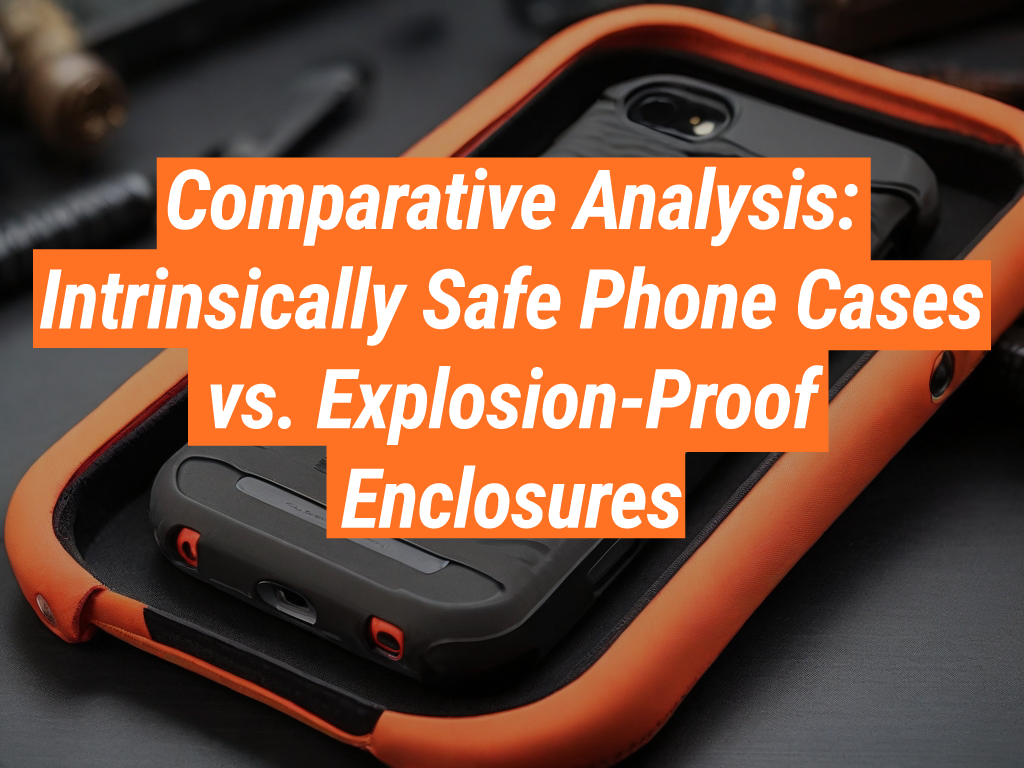When it comes to safety in hazardous environments, every detail matters. This includes the devices we use and how we protect them. In this article, we will delve into a comparative analysis of intrinsically safe phone cases and explosion-proof enclosures. We will explore their features, benefits, and applications, providing you with valuable insights to make informed decisions. This article is brought to you by the Intrinsically Safe Store, your one-stop-shop for all safety-related devices and accessories. We invite you to visit our website to explore our wide range of products.

Understanding Intrinsically Safe Phone Cases
Designers create intrinsically safe phone cases to limit the energy available for ignition, thereby preventing explosions in hazardous environments. Industries such as oil and gas, chemical manufacturing, and mining typically use them due to the high risk of explosive gases or dust.
- Features: These cases are lightweight, durable, and designed to fit specific phone models. They often have features like shock absorption, water resistance, and screen protection.
- Benefits: Intrinsically safe phone cases allow the safe use of regular smartphones in hazardous areas. They are cost-effective and easy to use.
- Applications: They are ideal for workers who need to stay connected in potentially explosive environments.
Exploring Explosion-Proof Enclosures
Designers create robust protective systems known as explosion-proof enclosures to contain any explosion originating within its housing. They also design these systems to prevent sparks from within its housing from igniting vapors, gases, dust, or fibers in the surrounding air.
- Features: Typically, manufacturers make these enclosures from heavy-duty materials like stainless steel or cast aluminum. They design them to withstand high pressures and temperatures.
- Benefits: Explosion-proof enclosures provide a high level of protection and are suitable for a wide range of equipment. They are durable and long-lasting.
- Applications: They are commonly used in industries such as oil and gas, power generation, and chemical processing.
Comparative Analysis
While both intrinsically safe phone cases and explosion-proof enclosures aim to prevent explosions, they do so in different ways and have different applications.
- Level of Protection: Explosion-proof enclosures offer a higher level of protection as they are designed to contain an explosion. Intrinsically safe phone cases, on the other hand, prevent an explosion from occurring in the first place.
- Cost: Intrinsically safe phone cases are generally more affordable than explosion-proof enclosures.
- Usability: Phone cases are easier to use and carry around, making them more suitable for personal devices. Enclosures, however, are more suited for protecting larger equipment.
Ensuring Safety in Hazardous Environments
In conclusion, both intrinsically safe phone cases and explosion-proof enclosures play crucial roles in maintaining safety in hazardous environments. The choice between the two depends on your specific needs, the nature of the hazardous environment, and the devices you wish to protect. We hope this comparative analysis has provided you with valuable insights to make an informed decision. For more information or to explore a wide range of safety devices and accessories, visit the Intrinsically Safe Store or contact us today.


